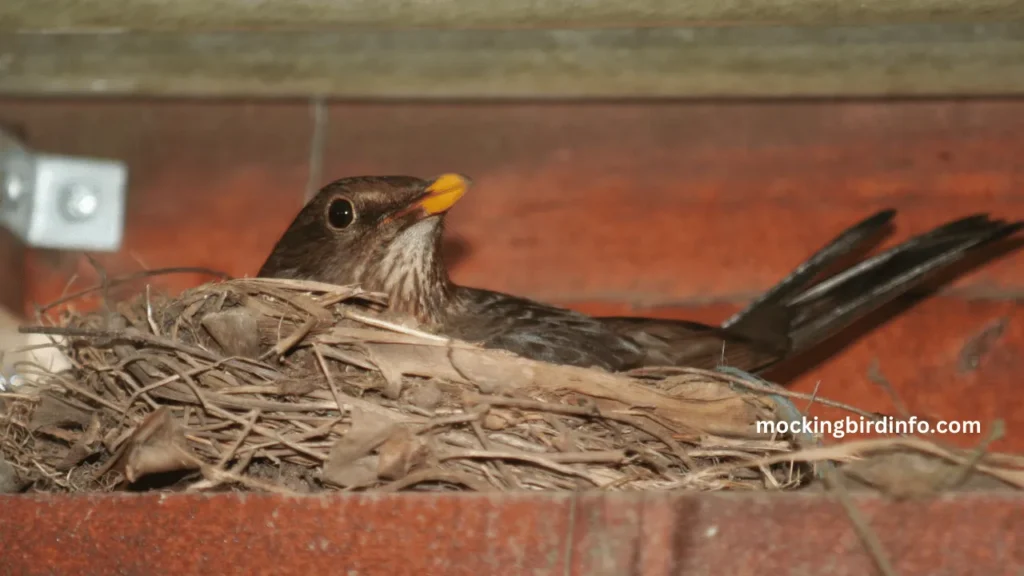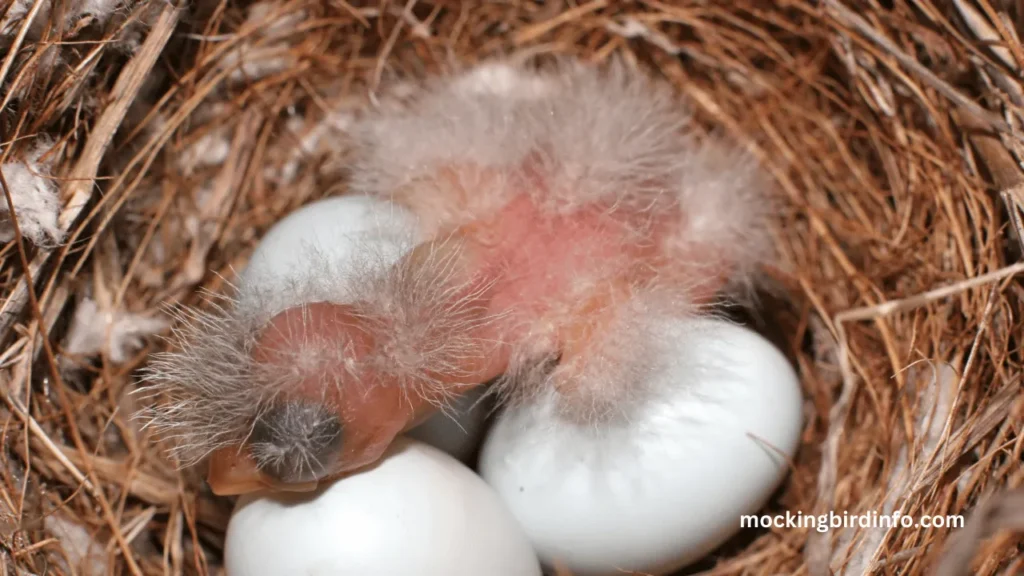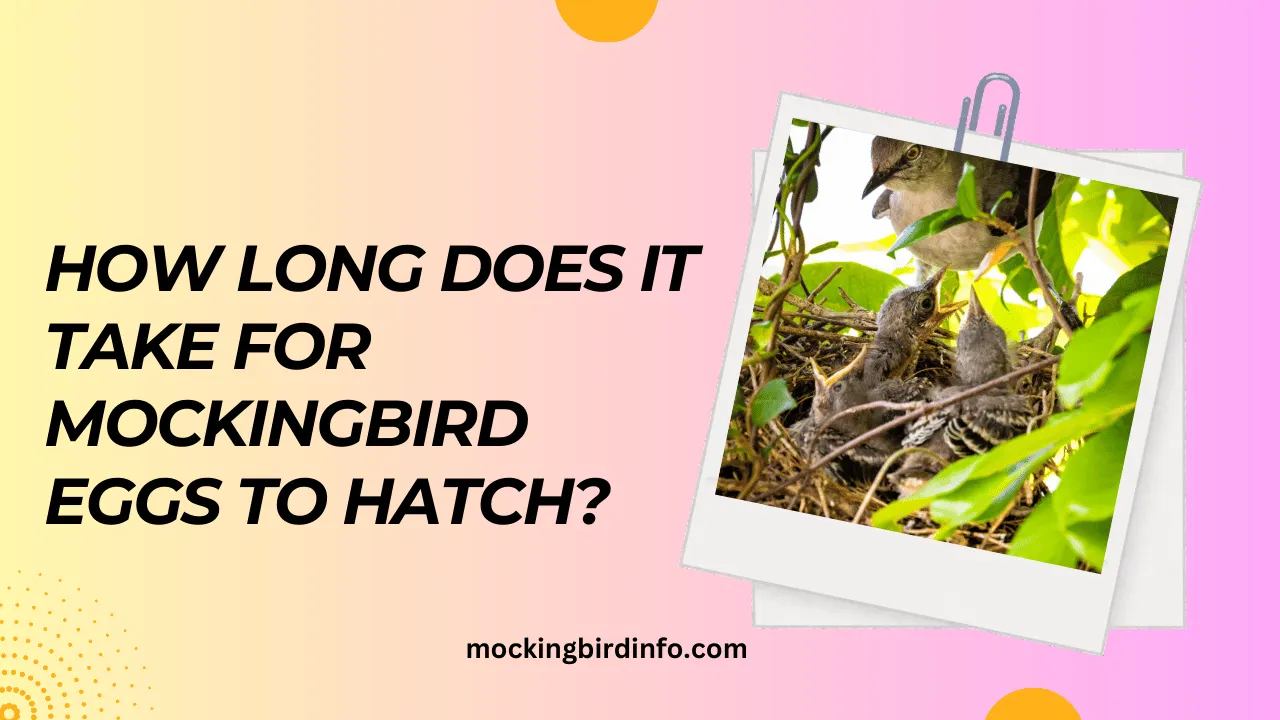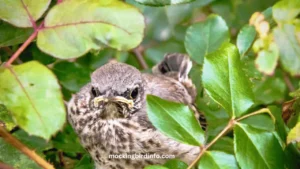The natural world is full of mysteries, but few sights are as intriguing as a mother bird protecting her eggs. Mockingbirds, known for their incredible mimicry and intelligence, are also fascinating for their nesting habits.
Have you ever wondered how long it takes for their eggs to hatch? Understanding the incubation period of mockingbird eggs provides a deeper insight into their life cycle and the delicate balance needed for successful reproduction.
The incubation period of mockingbird eggs, typically around 12-14 days, is a crucial phase that determines the survival of their young. These tiny, speckled eggs hold more than just the promise of life; they embody the resilience and tenacity of a bird that can thrive in various environments.
Whether nestled in the branches of suburban gardens or the wild thickets of natural parks, the process from egg-laying to hatching is nothing short of remarkable. By exploring the factors that influence incubation, the shared roles of parent birds, and the challenges they face, we gain an appreciation for these resourceful birds.
Let’s delve into the complex process that brings new life into the world, one feathered chick at a time.

Contents
Factors Influencing Incubation Time
Temperature: The ambient temperature plays a significant role in determining the duration of incubation. Warm weather often leads to faster development, potentially shortening the period, while cooler temperatures may prolong it.
Mockingbirds, like many birds, rely on their ability to maintain the perfect balance of warmth for optimal embryo growth.
Humidity: Humidity levels are equally essential in nurturing developing embryos. Low humidity can lead to eggs drying out and not hatching properly, while high humidity ensures moisture within the egg remains stable, facilitating development.
Mockingbirds naturally adapt to their surroundings, selecting nest sites with favorable conditions to regulate moisture levels.
Parental Care: The frequency and consistency of parental attention also impact the hatching timeline. Mockingbird pairs share incubation duties, ensuring the eggs are continuously kept warm.
The attentive switching between the male and female allows for stable heat, protecting the embryos from the risks associated with temperature fluctuations.
Role of Both Parents in Incubation
Shared Responsibility: Mockingbirds exhibit a well-orchestrated pattern of care where both parents take turns incubating their eggs. This behavior not only helps maintain optimal temperatures but also ensures each parent has the chance to feed and rest. Such coordination is vital for the overall success of their offspring.
Division of Labor: The division of labor can vary, with one parent, typically the female, handling more of the incubation tasks. However, the male supports by guarding the nest and providing food. This dynamic teamwork demonstrates the importance of cooperation in the survival strategy of mockingbirds.
Nest Building and Egg Laying
Nest Construction: The journey begins with the construction of the nest, an artful process where mockingbirds weave a combination of twigs, leaves, grass, and even bits of plastic to create a sturdy yet cozy cradle.
These nests are usually placed in shrubs or trees, offering a balance between concealment and accessibility.
Egg Laying: Once the nest is complete, the female mockingbird lays one egg per day, generally resulting in a clutch of 3-5 eggs. The eggs are small and speckled, with colors varying from light blue to greenish hues.
This staggered laying pattern means that hatching may not occur simultaneously, which adds an interesting aspect to their development.

Hatching Process
Embryonic Development: Inside the egg, the chick’s journey begins immediately after fertilization. Over the next 12-14 days, the embryos go through various growth stages, developing features like the heart, beak, and feathers.
The egg must be consistently warmed during this period for the chick to develop fully.
Pipping: As the hatching day approaches, the chick begins a process called pipping, where it pecks at the inside of the eggshell using a special egg tooth. This tiny, temporary structure helps it break through the shell without assistance. The process can last several hours as the chick works to crack open its protective barrier.
Hatching: Finally, the chick emerges from the shell, often exhausted from the effort. The hatchling is usually weak, blind, and featherless, relying entirely on its parents for warmth and food. This marks the start of the next critical phase: parental care and feeding.
Challenges Faced by Nesting Mockingbirds
Predation: One of the biggest threats to nesting mockingbirds is predation. Predators like snakes, raccoons, and certain birds pose constant danger to the eggs and chicks. Mockingbirds are known to defend their nests aggressively, using calls and swift attacks to deter intruders.
Weather Conditions: Nature can be unpredictable, and extreme weather conditions can jeopardize the safety of the nest. Heavy rain, wind, and sudden temperature drops can harm the eggs or delay hatching. The placement of nests in sheltered locations helps reduce these risks, showcasing the bird’s instinctive wisdom.
Human Disturbance: Human activities, such as gardening, construction, or even simple curiosity, can disturb nesting sites. Frequent disruptions may lead parents to abandon their nests, leaving the eggs exposed and vulnerable. Awareness and respect for bird habitats are crucial for ensuring their successful reproduction.
Conclusion
Understanding the incubation period of mockingbird eggs highlights not only their impressive adaptability but also the sheer determination of these birds to protect and nurture their young.
The process of building a nest, laying eggs, and ensuring the right conditions for them to hatch involves both parental teamwork and adaptation to external challenges. Protecting these nesting habitats is essential for maintaining the biodiversity mockingbirds contribute to.
By respecting their space and acknowledging the delicate incubation phase, we play a role in supporting these resilient songbirds. The next time you hear a mockingbird’s mimicry or spot a nest tucked away in a tree, remember the incredible process unfolding within those small, fragile eggs.
The journey from egg to chick is not just about time but the dedication and resilience that make life possible.
FAQs
1. How long do mockingbird eggs take to hatch?
Mockingbird eggs typically hatch within 12-14 days after being laid.
2. What factors affect the incubation period?
Temperature, humidity, and parental care are key factors that impact how long it takes for the eggs to hatch.
3. Do both parents incubate the eggs?
Yes, both the male and female share incubation duties, though the female often takes a larger role.
4. How many eggs do mockingbirds usually lay?
A typical clutch contains 3-5 eggs, laid one per day.
5. What do mockingbird eggs look like?
They are usually small and speckled, with colors ranging from light blue to greenish hues.
6. What challenges do mockingbirds face during nesting?
Predation, harsh weather conditions, and human disturbance are the main challenges.








